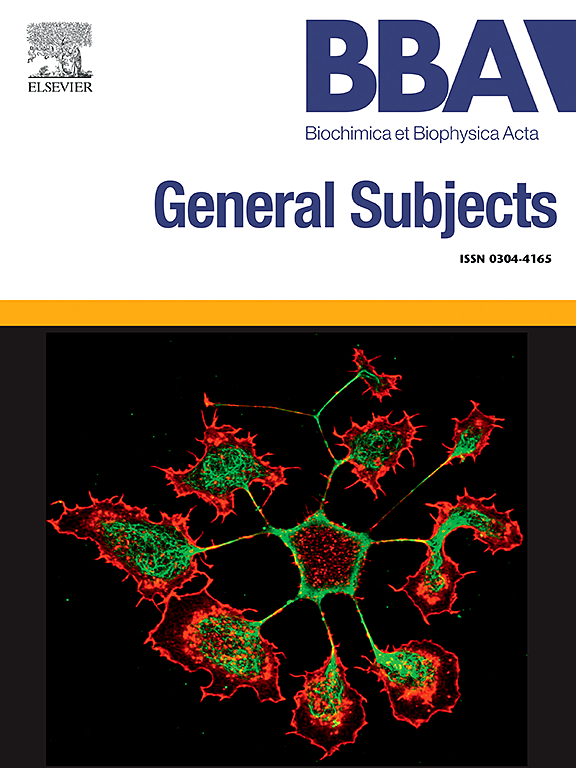Evaluating cholinesterases inhibition by BAC and DDAC biocides: A combined experimental and theoretical approach
IF 2.8
3区 生物学
Q3 BIOCHEMISTRY & MOLECULAR BIOLOGY
Biochimica et biophysica acta. General subjects
Pub Date : 2024-10-19
DOI:10.1016/j.bbagen.2024.130726
引用次数: 0
Abstract
Disinfectant biocides are chemicals that are heavily used for disinfection purposes in households, hospitals, and agrifood industry. The most common type of biocides are quaternary ammonium compounds (QAs), notably benzalkonium chloride (BAC) and didecyldimethylammonium chloride (DDAC), which have been shown to inhibit cholinesterases. This study aims to evaluate the effect of these biocides towards different cholinesterases using both enzyme inhibition and molecular docking experiments. Acetylcholinesterase (AChE) from Drosophila melanogaster (DM-AChE), Electrophorus electricus (EE-AChE), bovine erythrocytes (BE-AChE) and butyrylcholinesterase from horse serum (BChE) were selected for this study. Using a colorimetric assay, all these enzymes were shown to be inhibited in a competitive form by both biocides, BAC and DDAC, with the exception of DM-AChE, which was inhibited in a non-competitive manner by BAC. Molecular docking experiments enabled to identify structural determinants involved in the different modes of inhibition observed. More particularly, our results suggest that non-competitive inhibition of DM-AChE by BAC could be related to the binding of the inhibitor into a more extended active site compared to other cholinesterases.
评估 BAC 和 DDAC 生物杀灭剂对胆碱酯酶的抑制作用:实验与理论相结合的方法
消毒杀菌剂是家庭、医院和农业食品工业中大量用于消毒的化学品。最常见的杀菌剂是季铵盐化合物(QAs),特别是苯扎氯铵(BAC)和十二烷基二甲基氯化铵(DDAC),它们已被证明能抑制胆碱酯酶。本研究旨在通过酶抑制和分子对接实验来评估这些杀菌剂对不同胆碱酯酶的影响。本研究选择了黑腹果蝇的乙酰胆碱酯酶(AChE)(DM-AChE)、电蝇的乙酰胆碱酯酶(EE-AChE)、牛红细胞的乙酰胆碱酯酶(BE-AChE)和马血清的丁酰胆碱酯酶(BChE)。通过比色法,所有这些酶都被 BAC 和 DDAC 这两种生物杀灭剂以竞争形式抑制,但 DM-AChE 除外,它被 BAC 以非竞争方式抑制。通过分子对接实验,我们确定了与所观察到的不同抑制模式有关的结构决定因素。特别是,我们的研究结果表明,BAC 对 DM-AChE 的非竞争性抑制作用可能与抑制剂结合到比其他胆碱酯酶更扩展的活性位点有关。
本文章由计算机程序翻译,如有差异,请以英文原文为准。
求助全文
约1分钟内获得全文
求助全文
来源期刊

Biochimica et biophysica acta. General subjects
生物-生化与分子生物学
CiteScore
6.40
自引率
0.00%
发文量
139
审稿时长
30 days
期刊介绍:
BBA General Subjects accepts for submission either original, hypothesis-driven studies or reviews covering subjects in biochemistry and biophysics that are considered to have general interest for a wide audience. Manuscripts with interdisciplinary approaches are especially encouraged.
 求助内容:
求助内容: 应助结果提醒方式:
应助结果提醒方式:


